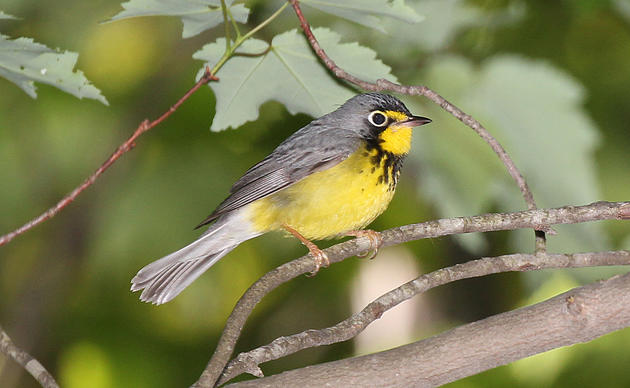Audubon New York is excited to partner with the Kunjamuk Young Forest Demonstration Project, which was created by the Wildlife Management Institute in cooperation with Lyme Adirondack Forest Company and the New York State Department of Conservation. The project aims to show that “a private timber company can achieve wildlife habitat goals through the use of traditional forest management practices without compromising economic returns.”
Lyme Adirondack Forest Company and the Wildlife Management Institute are cooperatively developing this demonstration project on a portion of Lyme’s 239,000-acre ownership in the Adirondack region of New York.
The harvest design complies with Adirondack Park Agency and state Wild and Scenic River requirements, and the ongoing timber harvests will set the stage for the lush regrowth of young forest, including trees, shrubs, and other plants that offer enhanced food and cover to wildlife.
According to the Wildlife Management Institute, “timber harvesting on the project will support the region’s economy by providing jobs for loggers and truckers and raw materials for wood-consuming mills,” while “the harvests will create age and tree-species diversity, helping to keep the forest healthy and resilient.”
Wins for Wildlife
Every other year, Audubon conducts breeding bird surveys to monitor the bird response to the different harvests at Kunjamuk’s demo site, which has proved to be a fantastic habitat demonstration area with diverse forest structure and age classes.
With over 3,000 acres of diverse forest habitat, a full suite of forest birds will benefit from the habitat conditions created at Kunjamuk. Many young forest dependent birds will benefit from the young forest being created, while mature forest dependent birds will enjoy the diverse structural conditions that are generated within mature forest at the site. In addition, many mature forest dependent birds tend to move to young forest habitat when they have finished nestingin mature forest – the adults and young will move during the post-fledging phase of the breeding season, which occurs after nesting and before migration, so having access to young forest is important.
Migrating birds will use the diverse forest for stopover habitat, and resident species, like Ruffed Grouse, will find abundant thermal cover, shelter, and food resources at Kunjamuk’s demo site. Other bird species who will benefit from the habitat in the area include the Wood Thrush, American Woodcock, Black-throated Blue, Canada, and Chestnut-sided Warblers along with other Species of Greatest Conservation Need in New York State.
Takeaways for Landowners and Managers
“Young forest is an important and ephemeral wildlife habitat that has been dwindling in New York State and across the entire Northeast for the last 50 years.” -Wildlife Management Institute
The Kunjamuk Young Forest Demonstration Project will help to ensure that young forests are being managedto benefit wildlife populations and habitats. According to the Wildlife Management Institute, “over the next 70 years, ongoing harvests will result in 10 percent of the area being in a young forest growth stage at all times.”
The project also encourages people to visit the site and attend workshops and woods walks to learn about “how timber harvests can provide an ongoing supply of the young forest habitat required by many kinds of wildlife.”
Learn more about the Kunjamuk Young Forest Demonstration Project here.
Help Us Protect New York's Forests
Covering nearly 400 million acres, eastern forests create one of the most dynamic environments in the world.




